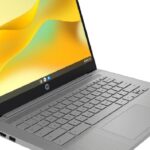After yesterday’s Nintendo Switch 2 reveal, Nintendo held several roundtable Q&A sessions in New York City and answered fans’ burning questions about the console. In these sessions, Nintendo revealed that the Switch 2 does in fact utilize Deep Learning Super Sampling, or DLSS, as well as ray tracing visual technology — but the company remains mum on how exactly it all works.
Leaks earlier in the year suggested that Nintendo might use some form of AI upscaling tech (and that’s exactly what DLSS is) with the intent of keeping game sizes small enough to fit on the cartridge without sacrificing 4K resolution. DLSS is an Nvidia technology, and Nintendo confirmed the Switch 2 does use an Nvidia GPU. As for details, Tetsuya Sasaki, GM of Nintendo’s Technology Development Division, said “Nintendo doesn’t share too much on the hardware spec. What we really like to focus on is the value that we can provide to our consumers. But I do believe that our partner Nvidia will be sharing some information.”
The DLSS implementation is particularly interesting and opens up a lot of potential for developers. Just like with the Xbox Series and the PlayStation 5, it’s possible games could offer both graphics and performance modes. According to Takuhiro Dohta, senior director of the Programming Management Group Entertainment Planning & Development Department, as transcribed by IGN:
“We use DLSS upscaling technology and that’s something that we need to use as we develop games.
“And when it comes to the hardware, it is able to output to a TV at a max of 4K. Whether the software developer is going to use that as a native resolution or get it to upscale is something that the software developer can choose. I think it opens up a lot of options for the software developer to choose from.”
When asked about the Switch 2‘s ray capabilities, Dohta said, “Yes the GPU does support ray tracing. As with DLSS, I believe this provides yet another option for the software developer to use and a tool for them.”
Nintendo provided a lot of information but left out the finer details. It’s likely that we’ll have to wait until we get our hands on a Switch 2 console to confirm the exact internal components, but the mere fact it’s capable of higher-end graphical technology like ray tracing and DLSS is a great sign. It suggests the Switch 2 is more powerful than initially let on, and that Nintendo might finally be closing the graphical gap between itself and its competitors.
Read the full article here













